By Mariana Rego originally published in Medium
Work is changing. So much so, there aren’t even good words to describe where it’s headed yet.
We at LeadWise believe that work is becoming more centered around people instead of mechanistic systems. What does this mean? Basically, the people who work at/with a company will be more able to bring their full selves to work instead of having to wear masks to fit into traditional corporate models.
For this reason, we call this evolution people-centric management.
People-centric management is not a monolithic movement. While the strands within people-centric management share philosophical similarities, its main styles propose tools and paths to suit different organizations.
The opportunity lies in adapting a more people-centric management style to your existing context.
As a collaborative style of management, this often leads to a culture shift reframing value systems to include transparency, self management, creativity as well as personal and professional growth.
To help you better understand some of the basic concepts behind this Future of Work movements, we’ve designed an infographic highlighting seven of them who are championing this approach to management with proven success.
By using these principles, these organizations have created systemic change in their teams focusing on core beliefs around people-centric management. These include enhanced employee engagement, optimized productivity through innovation, and reframing control to the collective instead of a hierarchy.
Take a look at how these movements around the world are rewriting corporate narratives by putting teams first.
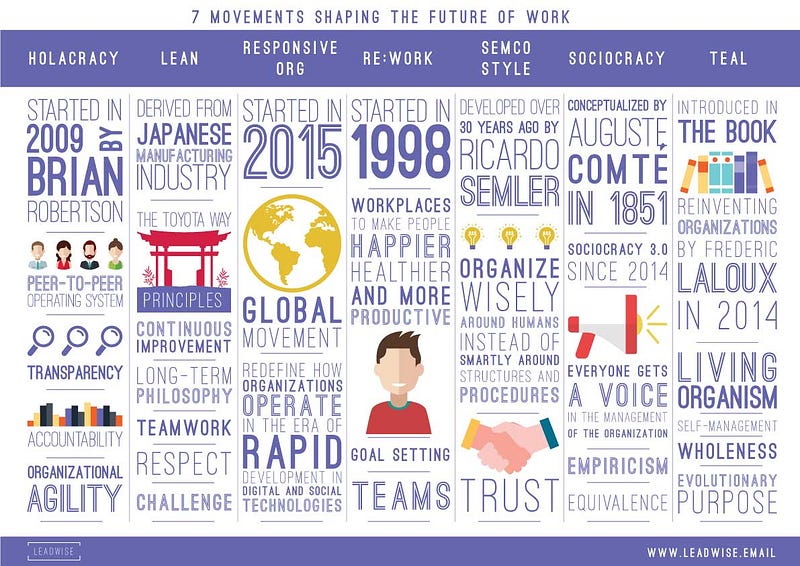
Holacracy
Started in 2009 by Brian Robertson, this movement replaces the traditional management hierarchy with a “peer-to-peer” operating system that increases transparency, accountability and organizational agility. The movement’s vision is to distribute authority among its teams to empower all employees to take leadership roles and make meaningful decisions.
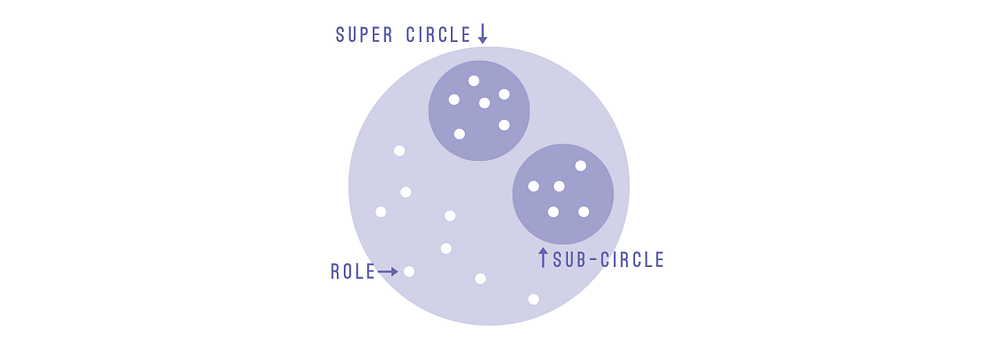
- Promotes flexible organizational structure. Dynamic roles replace static job descriptions.
- Advocates for meeting formats geared toward action eliminating over-analysis.
- Removes bureaucracy from decision-making.
Visit: www.holacracy.org
Lean
Derived from Japanese manufacturing industry, this movement focuses on taking the “fat” out of manufacturing business systems and streamlining processes by eliminating overburden or unbalanced workloads. This type of movement is best demonstrated by Toyota, which summed up its ideals in 2001, calling it “Toyota Way”. They base their management style on 14 principles.
- Promotes building a culture of stopping to fix problems, to get quality right the first time.
- Advocates for a learning environment through reflection and continuous improvement.
- Removes trust issues by using visual controls so no problems are hidden.
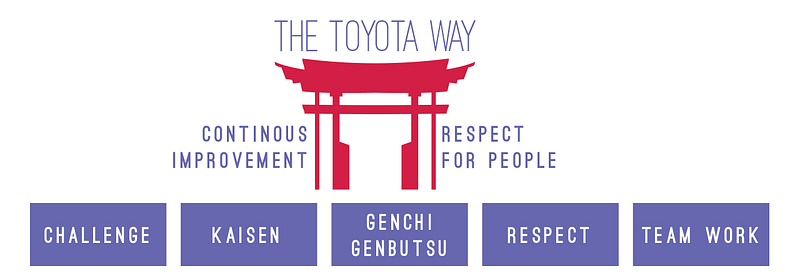
1 — “Base your management decisions on a long-term philosophy, even at the expense of short-term financial goals.”
2 — “Create a continuous process flow to bring problems to the surface.”
3 — “Use ‘pull’ systems to avoid overproduction.”
4 — “Level out the workload (work like the tortoise, not the hare).”
5 — “Build a culture of stopping to fix problems, to get quality right the first time.”
6 — “Standardized tasks and processes are the foundation for continuous improvement and employee empowerment.”
7 — “Use visual controls so no problems are hidden.”
8 — “Use only reliable, thoroughly tested technology that serves your people and process.”
9 — “Grow leaders who thoroughly understand the work, live the philosophy, and teach it to others.”
10 — “Develop exceptional people and teams who follow your company’s philosophy.”
11 — “Respect your extended network of partners and suppliers by challenging them and helping them improve.”
12 — “Go and see for yourself to thoroughly understand the situation.”
13 — “Make decisions slowly by consensus, thoroughly considering all options; implement decisions rapidly.”
14 — “Become a learning organization through relentless reflection and continuous improvement.
Visit: The Toyota Way
Responsive Org
Started in 2015, this global movement aims to redefine how organizations operate in the era of rapid development in digital and social technologies. Their mission is centered on a collective of organizations sharing concrete change toward a more responsive management system that fosters transparency, agility and openness.
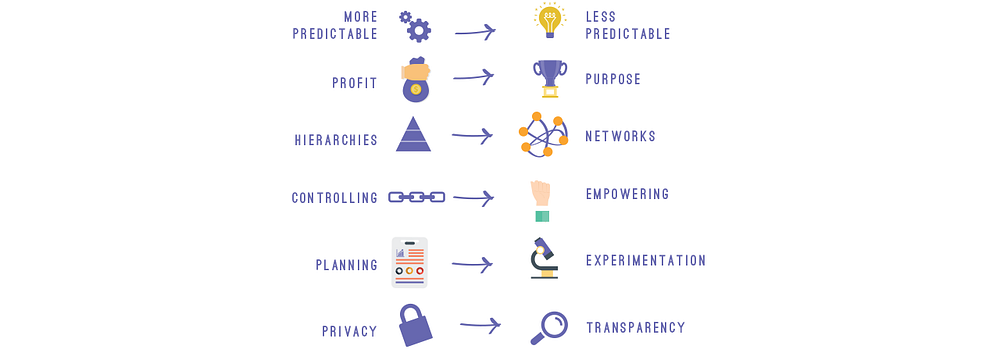
- Promotes networks of teams versus industrial-era hierarchies.
- Advocates for purpose instead of profit.
- Removes privacy centering around decisions and process to allow for more transparency within an organization
Visit: Responsive Org Manifesto
re:Work
Started in 1998, re:Work is a website sharing curated guides, case studies and research about how businesses like Google and others rethink business to put people first. Their goal is to provide resources to help other organizations design workplaces to make people happier, healthier and more productive.
- Promotes managers acting as role models for continuous growth and improvement.
- Advocates for treating employees like owners.
- Removes unconscious bias and replaces with education, measurement and accountability.
Visit: re:Work
Semco Style
Developed over 30 years ago by Ricardo Semler, this management approach organizes wisely around humans instead of smartly around structures and procedures. It is designed to treat adults as adults and put people above organizational modes.

- Promotes building a culture of trust where there is a free exchange of ideas and transparency in decisions, meetings and planning.
- Advocates for innovative and creativity to be nurtured in their employees and companies.
- Removes control systems and returns accountability and self-management to team members.
Visit: Semco Style
Sociocracy
Conceptualized by Auguste Comté, Sociocracy can be traced back to 1851. The movement has since remerged in modern times in 2014 as Sociocracy 3.0. It enables companies and teams to manage themselves as an organic whole meaning everyone gets a voice in the management of the organization. It is designed to grow effective, agile and resilient organizations of any size, from small startups to large international and national networks.
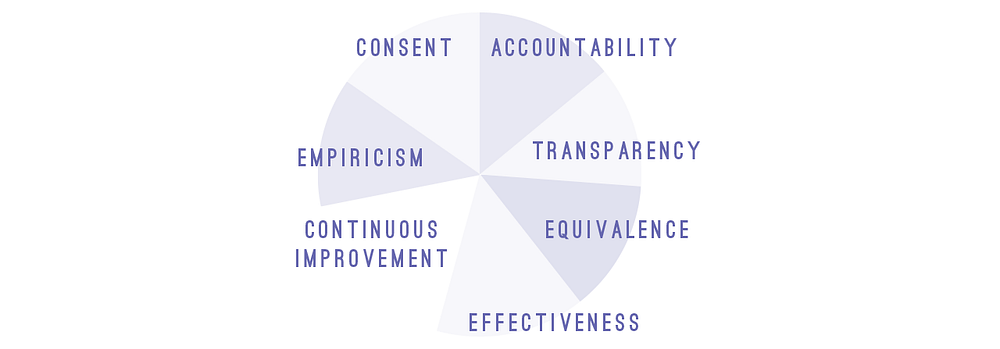
- Promotes effective flow of communication and information within the company.
- Advocates for accountability and engagement among its employees.
- Removes predetermined growth metrics and replaces them with flexible processes that allow organizations to move forward and grow at their own pace.
Visit: Sociocracy and Sociocracy 3.0
Teal
Introduced in the book Reinventing Organizations by Frederic Laloux in 2014, this movement advances the idea of soulful workplaces that focus on their impact in the world versus management targets. By focusing less on the bottom line and shareholder value and by implementing agile practices, Teal organizations are reaching new heights in financial results and are outpacing their competitors. These are the 3 breakthroughs:
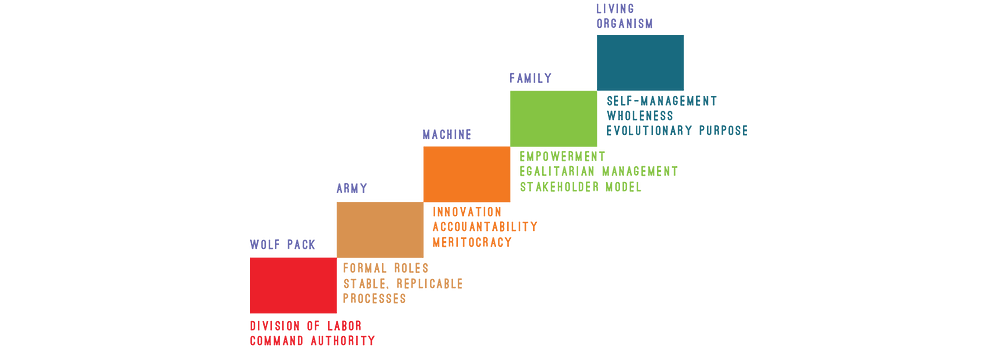
- Promotes self-management advocating for high autonomy among their employees and removes hierarchy, plan and control mechanisms and rules.
- Advocates for wholeness promoting working environment where personnel are invited to reclaim their inner wholeness and fully express themselves in the workplace resulting in high levels of energy, passion and creativity.
- Removes lack of purpose with evolutionary purpose — Teal organization base their strategies on what they sense the world is asking from them
Visit: Reinventing Organizations Wiki
The author wishes to thank Kristy Scott who helped with copy and Natalia Soares who worked on the graphics.
Permission to republish granted by the author.
Featured Image/Graphic link added by Enlivening Edge Magazine.
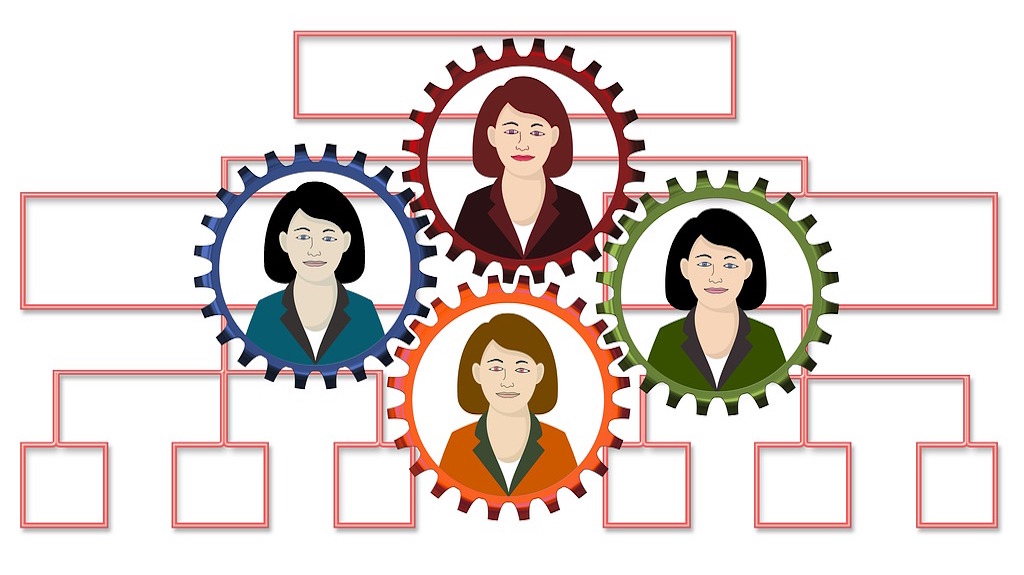


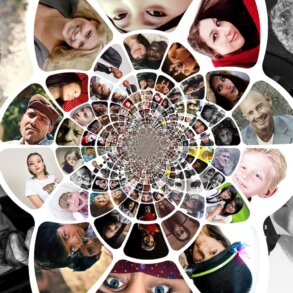

Great list of concepts and their history.
I would like to say that in my understanding, the naming of the approaches above does not mean that is when those practices were ‘invented.’ I think it means when they were named by the West management people. For instance, looking at the principles of Teal, where can I find examples of organisations that work this way?
What crosses my mind first is Toyota, and what they created from around 1947. By the time they got to around 1972, they had developed into way of managing and seeing that mirrors much of what Teal is about.
During that time, a couple of people from the ‘West’ interpreted what was happening in Toyota, and called it Lean. Unfortunately, the description of Lean left out some of the key principles and ideas that made the Toyota system so unique.
From what I have learned, Toyota is still progressing and works along Teal principles, and I would welcome any comments to help me to get clarity about this. And Toyota was also heavily influenced by Deming – whose key principles are still valid today as a Teal focus as they ever were.
Also, just to correct the article, Lean came from Toyota, and not the Japanese manufacturing. Japanese management is still as much in the old way of working as much of the management in the rest of the world.